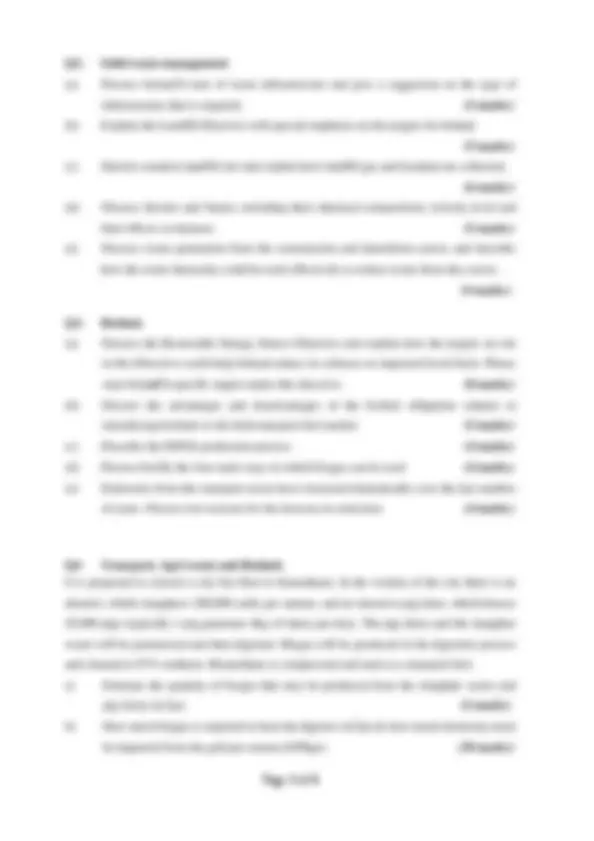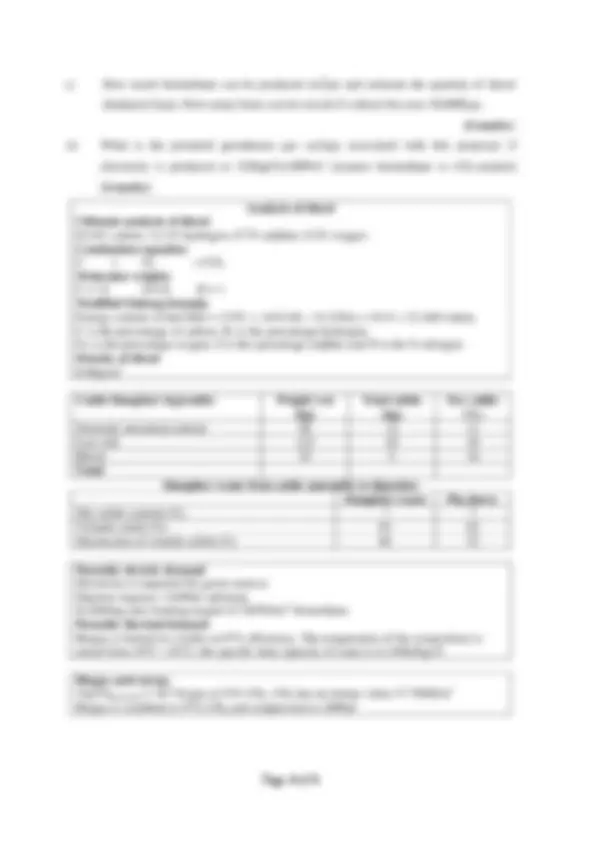




Study with the several resources on Docsity

Earn points by helping other students or get them with a premium plan


Prepare for your exams
Study with the several resources on Docsity

Earn points to download
Earn points by helping other students or get them with a premium plan
Community
Ask the community for help and clear up your study doubts
Discover the best universities in your country according to Docsity users
Free resources
Download our free guides on studying techniques, anxiety management strategies, and thesis advice from Docsity tutors
Main points of this past exam are: Monetary Value, Energy from Coal, Greenhouse Gas Savings, Modified Dulong Formula, Lack of Waste Infrastructure, Landfill Directive, Modern Landfill Site, Chemical Composition, Toxicity Level
Typology: Exams
1 / 4

This page cannot be seen from the preview
Don't miss anything!



Semester 2 Examinations 2011/
Module Code: CIVL
School: Building & Civil Engineering
Programme Title: Bachelor of Engineering (Hons) in Structural Engineering Bachelor of Engineering (Hons) in Sustainable Energy Certificate in Environmental & Energy Engineering
Programme Code: CSTRU_8_Y ESENT_8_Y EENEN_8_Y
External Examiner(s): Dr M. Richardson, Mr J. O’Mahony Mr P. Kenny, Mr C. Buckley Internal Examiner(s): Dr N. Power
Instructions: Answer all questions.
Duration: 2 Hours
Sitting: Summer 2012
Requirements for this examination:
Note to Candidates: Please check the Programme Title and the Module Title to ensure that you have received the correct examination paper. If in doubt please contact an Invigilator.
Q1. Energy from Coal A coal burning plant produces 850MWe at maximum efficiency. An efficiency of 35% is obtained. The plant operates on average 92% of the time. It is proposed to convert the plant to an oil burning plant which operates at 40% efficiency or natural gas plant operating with an electrical efficiency of 46%. Again the plants operate on average 92% of the time. (a) Determine the quantity of coal, oil and gas that is required to fuel the power plant (in units of tpa and m^3 pa). (10 marks) (b) Calculate the greenhouse gas savings in units of ktCO 2. (10 marks) (c) Estimate a monetary value of this saving based on a carbon tax of €120/t carbon. (2 marks) (d) A wind turbine operates at maximum efficiency 42% of the time; electricity from wind may be considered CO 2 neutral. What size of wind farm (MWe) is required to affect the same greenhouse gas savings? (3 marks) Modified Dulong formula Energy content of fuel MJ/t = 337C + 1419 (H 2 – 0.125O 2 ) + 93 S + 23.26N where, C is the percentage of carbon, H 2 is the percentage hydrogen, O 2 is the percentage oxygen, S is the percentage sulphur and N is the % nitrogen.
Properties of coal 67 % carbon, 7 .5% hydrogen, 5 .5% sulphur, 10% oxygen, 3 % nitrogen, 7 % ash Properties of oil 87% carbon, 11.7% hydrogen, 0.2% sulphur, 0.6% oxygen, 0.5% nitrogen Properties of natural gas Energy value of natural gas = 43.6MJ/m^3 Density of natural gas (kg/m^3 ): molecular weight divided by 22.412m^3 89 % methane (CH 4 ), 6. 7 % Ethane (C 2 H 6 ), 2. 6 % Propane (C 3 H 8 ), 1.2% Butane (C 4 H 10 ),
Combustion equation C + O 2 = CO 2 Molecular weights: C = 12, O = 16 H = 1
c) How much biomethane can be produced (m^3 pa) and estimate the quantity of diesel displaced (Lpa). How many buses can be served if a diesel bus uses 30,000Lpa. (6 marks) d) What is the potential greenhouse gas savings associated with this proposal, if electricity is produced at 528kgCO 2 /MWh? (assume biomethane is CO 2 -neutral) (4 marks) Analysis of diesel Ultimate analysis of diesel 85.4% carbon, 12.1% hydrogen, 0.7% sulphur, 0.2% oxygen Combustion equation C + O 2 = CO 2 Molecular weights C = 12 O=16 H = 1 Modified Dulong formula Energy content of fuel MJ/t = 337C + 1419 (H 2 – 0.125O 2 ) + 93 S + 23.26N where, C is the percentage of carbon, H 2 is the percentage hydrogen, O 2 is the percentage oxygen, S is the percentage sulphur and N is the % nitrogen. Density of diesel 810kg/m^3 Cattle Slaughter (kg/cattle) Weight wet (kg)
Total solids (kg)
Dry solids (%) Stomach, intestinal content 98 12 11 Low risk 123 43 34 Blood 25 5 16 Total Slaughter waste from cattle amenable to digestion Slaughter waste Pig slurry Dry solids content (%)? 7 Volatile solids (%) 82 82 Destruction of volatile solids (%) 84 53 Parasitic electric demand Electricity is imported for green sources Digester requires 11kWh/t substrate Scrubbing and cleaning require 0.72kWh/m^3 biomethane Parasitic thermal demand Biogas is burned in a boiler at 87% efficiency. The temperature of the waste/slurry is raised form 10oC – 65 oC; the specific heat capacity of water is 4.184kJ/kg/oC Biogas and energy 1kgVSdestroyed = 1m^3 biogas at 53% CH 4. CH 4 has an energy value 37.78MJ/m^3 Biogas is scrubbed to 97% CH 4 and compressed to 200bar